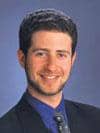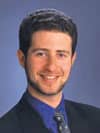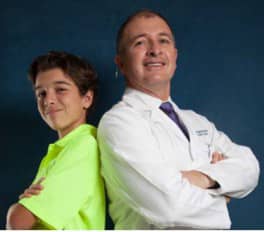by Anita D’Alessandro
How one orthodontist chooses to treat TMD
-
- David Alpan,
DDS, MSD
David Alpan, DDS, MSD, founded Aesthetic Orthodontics in Los Angeles in 1998; he added offices in Beverly Hills, Calif, and Las Vegas in 1999. Alpan became certified to use Invisalign® in 1999, and Align Technology hired him in 2001 to teach orthodontists and general dentists to become certified providers. He also leads study clubs in Los Angeles and Orange County.
Alpan also founded Orthodontic Treatment Planning (OTP) to help newly certified orthodontists with optimum treatment plans and ClinCheck reviews for the Invisalign procedure. He sold it in 2003 and continues his private practice, which includes treating TMD.
OP: What inspired your academic interest in TMD?
Alpan: My academic interest in TMD was inspired by my father [Jack Alpan, DDS, ND], who practiced dentistry for 30 years and treated patients with TMD problems. As a restorative dentist, my father saw that occlusion and the bite can have effects on the TMJ. I saw many patients get relief from chronic pain and many other associated symptoms after my father treated their TMD.
While I was studying dentistry at [University of the Pacific School of Dentistry in San Francisco] UOP, we learned very little about TMD and how to treat it. My goal as an orthodontist was to create beautiful smiles while improving the function of the teeth and supporting the function of the TMJ. The TMJ is a unique joint and functions differently from any other joint in the body. Since I have control of all the teeth in the mouth, I always want to create an occlusion in harmony with how the TMJ functions.
TMJ/TMD is the least understood and most widely argued specialty in dentistry. I thought the controversy was worth investigating.
OP: Many orthodontists don’t treat TMD. Why do you choose to do so?
Alpan: Most orthodontists don’t treat TMD because it is a specialty unto itself. Orthodontists usually want to create systems that allow for efficient treatment modalities. TMD treatment is not about efficiency or maximizing our use of RDAs with lots of delegation. TMD treatment requires more doctor time and very little assistant time. So, as an orthodontist, it is usually more efficient to just focus on straightening teeth and not treating TMD patients.
I choose to treat TMD because it is of interest to me as a specialist in creating perfect position and function of teeth. Since our smile is aesthetic and our bite is the function, the focus of treatment is to combine function and aesthetics. I wrote my masters’ thesis on a TMJ project while completing my orthodontic training, and have always felt that it is just as important to create a good bite as a pretty smile.
My interest in TMD was also sparked when I heard a patient say, “My TMD started after my orthodontic care.” I wanted to make sure that any orthodontic case I finished would not transform into a TMD patient. Anyone can straighten teeth, but to make a beautiful smile that can function properly and will last a lifetime with no TMD symptoms is my goal.
OP: About what percentage of your patients present with TMD symptoms?
Alpan: Less than 1% of all my patients have TMD symptoms. The most difficult part of treating TMD is making the correct diagnosis. I don’t consider a pop or a click a TMD symptom. I consider more than 150 related symptoms, including limited range of motion, pain, jaw locking closed or open, difficulty eating or chewing, and chronic pain in the back, neck, and shoulders. Not all symptoms will go away, but improvement or educating the patient on how to manage the symptoms is a large part of the treatment.
Since I treat TMD as a subspecialty, I probably have more TMD patients in my practice than most orthodontists. It still constitutes less than 5% of my practice.
OP: Have you found that TMD symptoms are more common among adults or adolescents?
Alpan: TMD is more common in adults than adolescents, and is more common in women than men. The most common TMD patient is a female between the ages of 30 to 45. It is rare to see a child with TMD.
OP: If a patient presents with TMD symptoms, how do you treat him or her?
Alpan: The symptoms of TMD—a list of more than 150 items—dictate the type of treatment. TMD problems can be caused by nervous-system issues, tumors or growths, trauma, skeletal issues, muscular problems, and many other causes. I tend to only treat the muscular symptoms.
I treat the TMD problem prior to orthodontic treatment when the symptoms are severe (major pain, limited range of motion, jaw locked open or closed, pain that limits normal life). I always recommend that TMD symptoms be treated prior to orthodontic care, as the TMD patient must have the symptoms reduced prior to initiating orthodontics. An orthodontic patient will need to have full range of motion and be able to open and close normally. There is some discomfort with orthodontics, so we don’t want to have a pain/TMD patient experience any more discomfort than necessary.
I would stabilize the bite and symptoms with a mandibular flat-planed splint that is constructed from a neuromuscular bite (using the treatment method that Robert Jankelson, DDS, lays out in his book Neuromuscular Occlusion). The splint is usually adjusted multiple times. First, we relax the muscles with the use of Trans Electro-Cutaneous Nerve Stimulation (TENS), or we may use muscle-relaxing medication. Each patient responds in a different time frame. Some may require 10 TENS treatments with one or two adjustments of the splint. Others may require 20 TENS treatments with 10 adjustments to the splint. The longer the patient has had TMD, the longer it takes to get them stable. Stable means no symptoms, or at least 80% to 90% reduction in their symptoms.
A dynamic approach to the problem is indicated, so we discuss diet, postural habits when sleeping or working, physical therapy, chiropractic care, acupuncture treatment, acupressure treatment, health counseling, nutritional counseling, psychological counseling, exercise (aerobic, three times per week), positive mental outlook, and nutritional supplements (Vitamins B, C, A, E, immune-system builders, herbs, minerals, etc). We advise no caffeine, no alcohol, no drugs, and 8 hours of sleep per night. We are creating an atmosphere or environment where the nerves/muscles are relaxed so the jaw can find a comfortable place to function with no TMD symptoms. The body is actually healing itself when we reduce the tension in the muscles and give it the proper supplements and time to heal. This could take 1 to 6 months, depending on how severe it was to start.
Once the patient is stabilized in a reproducible bite, then we move to Phase II TMD treatment with orthodontics to move the teeth into the position of the splint. The previous bite was associated with symptoms. The new bite is stable with no symptoms. We can then treat the teeth orthodontically to this new bite.
OP: How often do you encounter TMD during orthodontic treatment?
Alpan: I have only treated TMD during braces on a very rare basis (approximately 0.001%). There are some patients who may develop some symptoms for a short period of time, but the symptoms usually go away by their next visit. This patient may never tell me that these symptoms came up because it is not a current problem. So the percentage could be higher, but still extremely low. The body knows that all the teeth are moving and are not fitting together properly, so the proprioception (central nervous system, which knows and controls the position of the jaw) actually sends messages to the muscles to not work as hard if the teeth can’t fit together properly.
The treatment here is usually getting the patient comfortable with relaxing the muscles with TENS or muscle relaxers without the use of a splint.
OP: Have you found any difference in patients that you treat with Invisalign?
Alpan: Treating TMD during Invisalign is also very rare. I have had three patients out of 800 develop TMD symptoms during Invisalign treatment. There were probably more, but some of the symptoms of TMD are cyclical. In other words, TMD symptoms can come and go and may have nothing to do with the treatment at all. It may be due to an accident or stress or bad sleeping posture, for example. Treatment is the same as outlined above.
OP: Has your approach to TMD changed over the years? If so, how?
Alpan: My approach to treating TMD has not changed over the past 10 years. My approach is taken from a combination of many great clinicians, including my father, Jack Alpan, DDS, ND; Charles McNeil, DDS; Robert Jankelson, DDS; Peter Chase, DDS; and many, many others. My father treated TMD with this approach for 30 years, and now I have been using it for 10 years.
There are more than 8,000 articles on TMD, and there are about 20 to 30 different ways to treat the problem. I have always agreed with McNeil on the multidisciplinary or dynamic approach to treating this problem. The dynamic approach is utilizing many specialties to deal with this systemic problem. When we consider that the body is one unit with very complex interactions, we must consider all these interactions in our diagnosis and our treatment. Treating just the teeth does not work, and if you try to isolate TMD problems to just the joint itself, then you lose sight of all the other influences and potential causes.
OP: What is the most valuable thing you’ve learned over your years of treating TMD?
- .
Alpan: The most valuable thing I have learned over the years is that TMD symptoms are not a pop and a click. I have also seen that symptoms come and go, and not all TMD symptoms correlate to a true TMD problem. I have found that most TMD patients are not taking care of themselves physically. TMD is a degenerative process that can be stopped with proper care of the body. Treating TMD symptoms with orthodontics is the worst mistake any practitioner can make. The best way to hold the correction long term is to use orthodontics as a Phase II TMD treatment to get rid of the splint and have the teeth support the bite.
Anita D’Alessandro is a contributing writer for Orthodontic Products. For more information, contact











